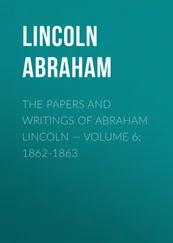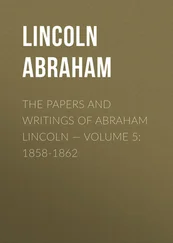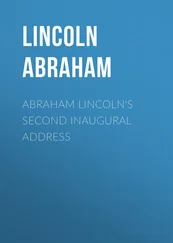On the day he removed the bowel to expose the aorta and kidneys, he saw her womb. It wasn't the shriveled purse he expected to find, sunk into the bowl of the pelvis. Instead, it peeked above the pelvic brim. A few days later he turned to the pelvis, his Cunningham's dissection manual open to the new section. He proceeded step by step, marveling at the book's genius as it unpeeled and unroofed and taught as it went. Cunningham's dictated a vertical slice through the front of the uterus and then the operator was to gently pry the uterus open. He did, and out fell a fetus, its head a little bigger than a grape, eyes tightly shut, limbs folded in like an insect. It dangled on the umbilical cord like an obscene talisman on a headhunter's belt. He could see the mother's cervix destroyed and black, from infection or gangrene. The catastrophe that befell this woman was memorialized in formalin.
Stone barely made it to the sink before his dinner came up. He felt betrayed, as if someone had been spying on him. All this time he'd imagined he and she were alone. He couldn't go on. He couldn't even look at her, or fold her back up or cover her. The next day he asked the puzzled attendant to dispose of the cadaver even though the dissection of the pelvis was incomplete and the lower limbs were untouched. But Thomas Stone was done.
At Missing Hospital, because of Hema, Stone never had to venture into the territory of the female reproductive organs. That area he conceded (and it was atypical for him to concede anything) to her.
He and Hemlatha were civil, collegial, and even friendly outside the operating theater. After all, Missing only had three physicians—Hema, Stone, and Ghosh—and it would've been awkward if they didn't get along. But in Operating Theater 3, Hema and Stone managed to provoke each other. Hema's style was precise and careful—a living example, Matron thought, of why more women should be surgeons. Matron sometimes believed she saw Hemlatha listening and then thinking when with a patient in the clinic, rather than trying to do both things at once. Hema was a surgeon who would throw four casts to her knots where others might be content with three. She never left the operating room until her patient awoke from anesthesia. Her surgical field was as neat and tidy as an anatomical demonstration with vulnerable structures carefully identified and moved out of harm's way and with bleeding meticulously controlled. To Matron the field looked static, yet alive, like a painting by Titian or da Vinci. “How can a surgeon know where she is,” Hema was fond of saying, “unless she knows where she has been?”
For Stone, minimal handling of tissue was what counted the most, and he had no time for the aesthetic of the surgical field. “Hema, if you want pretty, dissect cadavers,” he once told her. “Stone, if you want bloody, become a meat cutter,” she said. So vast was his experience and the practice that he put into his craft that his nine fingers could find their way in a bloody field in which no landmarks were visible to others; his movements were economical and precise, and his results were excellent.
On those rare occasions when a woman with the mud of the field still fresh on her feet was brought in with a bull-gore wound that extended into the pelvis, or when a bar girl came with a knife or bullet wound near the uterus, Hemlatha and Stone would scrub together and enter the abdomen à deux, fussing at each other, bumping heads, and at times rapping each other's knuckles with the handle of the hemostat. Matron said she kept a register of which surgeon had stood on the right side at the last joint exploration, and she made sure they took turns. While Hemlatha meticulously resected uterus or repaired a bladder tear, Stone, who could not carry a tune, nevertheless whistled “God Save the Queen,” which riled Hema. If Stone went first, Hemlatha would talk about the famous surgeons of years past—Cooper, Halsted, Cushing—and what a shame it was that tropical surgeons showed no sign of that great surgical legacy.
Stone didn't believe in glorifying surgeons or operations. “Surgery is surgery is surgery,” he liked to say, and on principle he would no more look up to a neurosurgeon than down on a podiatrist. “A good surgeon needs courage for which a good pair of balls is a prerequisite,” he had even written in the manuscript of his textbook, knowing fully well that his editor in England would take it out, but enjoying the experience of putting those words on paper. Stone had found a volubility a combative-ness and forcefulness, in his writing that he didn't show in his speech. “Courage? What's this you write about ‘courage’?” Hema asked. “Is it your life you are risking?”
A Cesarean section was technically not beyond Stone's abilities. But on that fateful day, the thought of taking scalpel to Sister Mary Joseph Praise—his surgical assistant, his closest confidante, his typist, his muse, and the woman he realized he loved—terrified him. She was already in appalling shape, pale and clammy, her pulse so thready that he believed anything he did would send her over the precipice. On a stranger, he might not have hesitated to try a Cesarean section. “The doctor who treats himself has a fool for a patient” was an adage he knew well. But what about a doctor who performed an unfamiliar operation on a loved one? Was there an adage for that?
Increasingly, since the publication of his textbook, Stone had taken to quoting from it, as if his own written word had greater legitimacy than his unpublished (and heretofore unspoken) thoughts. He'd written, “The doctor who treats himself has a fool for a patient, but there are circumstances when he has no recourse … “ He had gone on to chronicle the tale of his own ray amputation, how he'd performed a nerve block on his right elbow, and then, with Sister Mary Joseph Praise “helping,” he had made the incision into his flesh, his left hand doing some of the work while Sister Mary Joseph Praise stood in for his right. He realized as he watched her make the bone cuts that she could do much more than assist if she chose to. It was the anecdote of the amputation, together with his picture in the frontispiece, his fingers—all nine of them—forming a steeple in front of his chin, which had made the book so successful. There were so many extant surgery texts that it was surprising how popular The Expedient Operator (or A Short Practice, as it was known in some countries) had become. For a tropical surgery book, most of its sales took place in nontropical countries. Perhaps it was its quirkiness, its biting tenor, and the often sharp and unintended humor. He drew only on his experience or his careful interpretation of the experience of others. Readers pictured him as a revolutionary, but one who operated on the poor instead of preaching land reform. Students wrote him adoring letters, and when his dutiful responses (penned by Sister Mary Joseph Praise) didn't match the gushy, confessional tone of their letters, they pouted.
The illustrations in the textbook (all drawn and lettered by Sister Mary Joseph Praise) had a simple quality as if done on a napkin; no attempt was made at getting proportion or perspective right, but they were models of clarity. The book was translated into Portuguese, Spanish, and French.
Daring operations performed in darkest Africa— that was how the publisher had described the book on the back cover. The reader, knowing nothing about the “dark continent,” filled in the blanks, pictured Stone in a tent, a kerosene lamp held up by a Hottentot providing the only light, elephants stampeding outside while the good doctor recited Cicero and excised a part of himself as blithely as if he were cutting for stone on the body of another. What neither the reader nor Stone would accept was that his self-amputation was as much an act of conceit as it was an act of heroism.
Читать дальше












